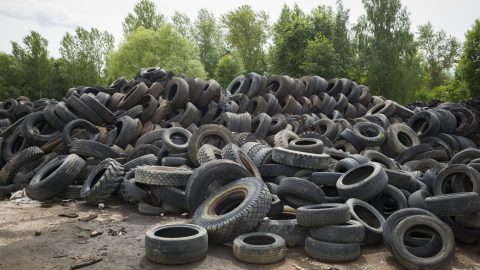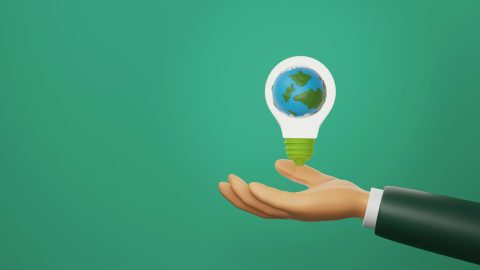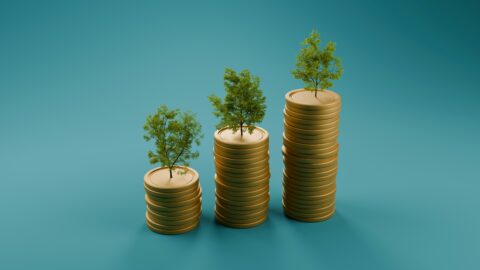Everything was better in the old days. We used not to have plastics made from hydrocarbon. What is plastic today used to be natural rubber. Natural rubber is a substance similar to vulcanised rubber that is produced by the milky sap (latex) of rubber plants. An earlier term in use was caoutchouc, a word originating from the language of the Tupi and Quechua Indians and roughly translating into “tears of the tree”, “crying” or “bleeding wood”. Which of course does not sound like everything was better at all in the old days.
Natural rubber originally comes from Central America and had been used by the people in Mesoamerica for centuries. The temple complexes of Tikal, Palenque or Chichen Itzas, for example, have images of ball games engraved into the stelae and buildings. These ritual games were played with solid rubber balls made from natural rubber. Some of these games ended in the ritual sacrifice of the players. So not everything was better in the very old days.
Natural rubber is water-soluble, brown, and smells bad. I own a crocodile made from natural rubber by indigenous people from Brazil. My daughter likes to play with it, but beyond that, it does not have much use. That used to be the fate of natural rubber until 1839, the year when Charles Goodyear invented the vulcanisation of natural rubber – a process that created a new, very flexible, water-resistant, and durable material – vulcanised rubber.
Without wishing to add a PR aspect – the name “Goodyear” already indicates how the story continued. Even today, the production of car tyres consumes some 70% of all globally extracted natural rubber. The triumph of the motorcar also meant an increase in demand for natural rubber – a fact that led to the building of the opera house of Manaus, the legendary film Fitzcarraldo, and a ghost town in the Amazon jungle called Fordlandia. With the natural rubber monopoly falling in Brazil, the boom ended as abruptly as it had started. And just like in most cases when a resource boom has come to its end, the scars in the environment, the social setting, and the political structures (i.e. governance) can still be seen today. And it is not getting any better either.
In Brazil, the large-scale cultivation of natural rubber was never going to happen as a fungus that was resistant to fungicides prevented the creation of monocultures. Therefore, natural rubber is still produced in a very sustainable way in Brazil today. Given that the fungus did react to fungicides in other parts of the world (N.B. also an ESG topic), the creation of plantations in South-East Asia and Africa was only a matter of time. Brazil thus lost its no.1 rank in natural rubber production to countries like India or the then Belgian Congo, which was a private colony owned by the Belgian King Leopold II. He maltreated the local population, not only but also for the production of natural rubber – so much so that even 100 years on, he has been immortalised by the Wikipedia entry “Atrocities in the Congo Free State”.
The next big step in the history of natural rubber was the sequence of WWI and WWII. War was yet again the father of all, to paraphrase Heraclitus. Especially in WWII, the demand for rubber was enormous, and both Germany and the USA were cut off from their natural rubber sources. This situation resulted in frenzied efforts to produce rubber synthetically – which heralded the age of synthetic rubber and thus, of proto-plastic.
Nowadays, many products like rubber tyres, rubber boots, chewing gums, erasers, and condoms contain a mix of natural and synthetic rubber. Both materials can be linked to a number of ESG problems. What is important to me is to point out the complexity of the topic and the social and environmental experiences made in the past. Simply replacing one raw material with another one will be an unviable shortcut in the future as well.
Legal disclaimer
This document is an advertisement. Unless indicated otherwise, source: Erste Asset Management GmbH. The language of communication of the sales offices is German and the languages of communication of the Management Company also include English.
The prospectus for UCITS funds (including any amendments) is prepared and published in accordance with the provisions of the InvFG 2011 as amended. Information for Investors pursuant to § 21 AIFMG is prepared for the alternative investment funds (AIF) administered by Erste Asset Management GmbH pursuant to the provisions of the AIFMG in conjunction with the InvFG 2011.
The currently valid versions of the prospectus, the Information for Investors pursuant to § 21 AIFMG, and the key information document can be found on the website www.erste-am.com under “Mandatory publications” and can be obtained free of charge by interested investors at the offices of the Management Company and at the offices of the depositary bank. The exact date of the most recent publication of the prospectus, the languages in which the fund prospectus or the Information for Investors pursuant to Art 21 AIFMG and the key information document are available, and any other locations where the documents can be obtained are indicated on the website www.erste-am.com. A summary of the investor rights is available in German and English on the website www.erste-am.com/investor-rights and can also be obtained from the Management Company.
The Management Company can decide to suspend the provisions it has taken for the sale of unit certificates in other countries in accordance with the regulatory requirements.
Note: You are about to purchase a product that may be difficult to understand. We recommend that you read the indicated fund documents before making an investment decision. In addition to the locations listed above, you can obtain these documents free of charge at the offices of the referring Sparkassen bank and the offices of Erste Bank der oesterreichischen Sparkassen AG. You can also access these documents electronically at www.erste-am.com.
Our analyses and conclusions are general in nature and do not take into account the individual characteristics of our investors in terms of earnings, taxation, experience and knowledge, investment objective, financial position, capacity for loss, and risk tolerance. Past performance is not a reliable indicator of the future performance of a fund.
Please note: Investments in securities entail risks in addition to the opportunities presented here. The value of units and their earnings can rise and fall. Changes in exchange rates can also have a positive or negative effect on the value of an investment. For this reason, you may receive less than your originally invested amount when you redeem your units. Persons who are interested in purchasing units in investment funds are advised to read the current fund prospectus(es) and the Information for Investors pursuant to § 21 AIFMG, especially the risk notices they contain, before making an investment decision. If the fund currency is different than the investor’s home currency, changes in the relevant exchange rate can positively or negatively influence the value of the investment and the amount of the costs associated with the fund in the home currency.
We are not permitted to directly or indirectly offer, sell, transfer, or deliver this financial product to natural or legal persons whose place of residence or domicile is located in a country where this is legally prohibited. In this case, we may not provide any product information, either.
Please consult the corresponding information in the fund prospectus and the Information for Investors pursuant to § 21 AIFMG for restrictions on the sale of the fund to American or Russian citizens.
It is expressly noted that this communication does not provide any investment recommendations, but only expresses our current market assessment. Thus, this communication is not a substitute for investment advice.
This document does not represent a sales activity of the Management Company and therefore may not be construed as an offer for the purchase or sale of financial or investment instruments.
Erste Asset Management GmbH is affiliated with the Erste Bank and austrian Sparkassen banks.
Please also read the “Information about us and our securities services” published by your bank.



